- News
- Reviews
- Bikes
- Components
- Bar tape & grips
- Bottom brackets
- Brake & gear cables
- Brake & STI levers
- Brake pads & spares
- Brakes
- Cassettes & freewheels
- Chains
- Chainsets & chainrings
- Derailleurs - front
- Derailleurs - rear
- Forks
- Gear levers & shifters
- Groupsets
- Handlebars & extensions
- Headsets
- Hubs
- Inner tubes
- Pedals
- Quick releases & skewers
- Saddles
- Seatposts
- Stems
- Wheels
- Tyres
- Tubeless valves
- Accessories
- Accessories - misc
- Computer mounts
- Bags
- Bar ends
- Bike bags & cases
- Bottle cages
- Bottles
- Cameras
- Car racks
- Child seats
- Computers
- Glasses
- GPS units
- Helmets
- Lights - front
- Lights - rear
- Lights - sets
- Locks
- Mirrors
- Mudguards
- Racks
- Pumps & CO2 inflators
- Puncture kits
- Reflectives
- Smart watches
- Stands and racks
- Trailers
- Clothing
- Health, fitness and nutrition
- Tools and workshop
- Miscellaneous
- Buyers Guides
- Features
- Forum
- Recommends
- Podcast
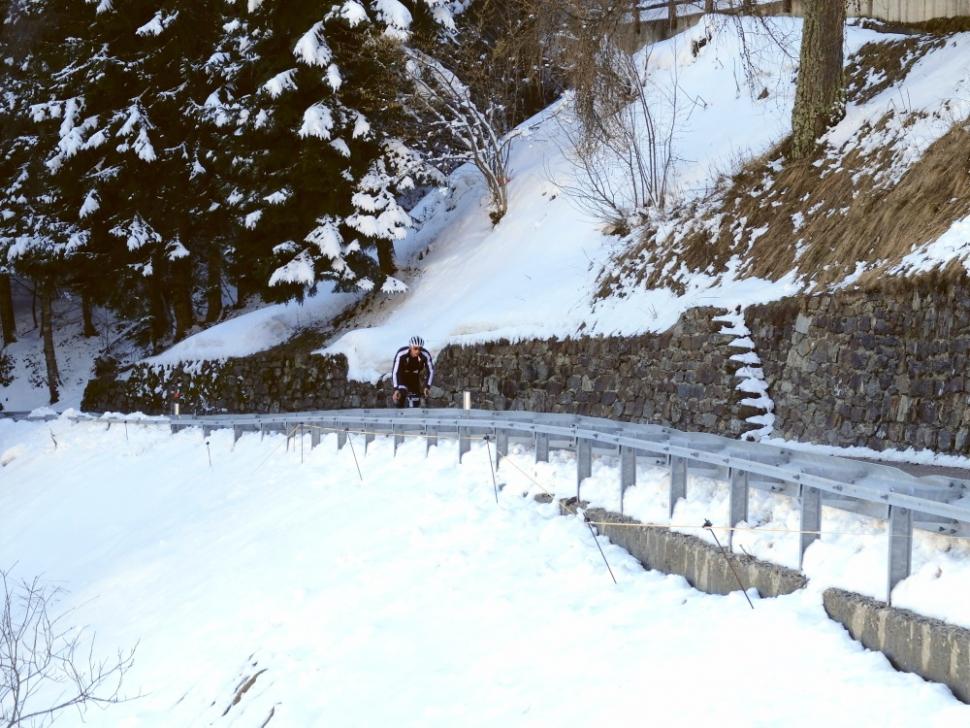 Panarotta 41
Panarotta 41Winter cycling: 11 questions you always wanted to ask, answered

This article includes paid promotion on behalf of Upgrade Bikes
Riding in winter certainly has its challenges but it can be comfortable, safe and a lot of fun if you follow some simple advice.
‘Fear of the dark, fear of the dark, I have a constant fear that something’s always near,’ sang Iron Maiden, which goes to show that these prima donna rock star types are a bunch of softies when it comes to year-round bike riding.
But if you can’t get your winter cycling advice from ol’ air raid siren Bruce Dickinson, where can you get it? We can’t hold a note to save our lives here at road.cc, but we do know a thing or two about riding in the cold, wet and dark, so here are 11 of the most common winter riding questions answered.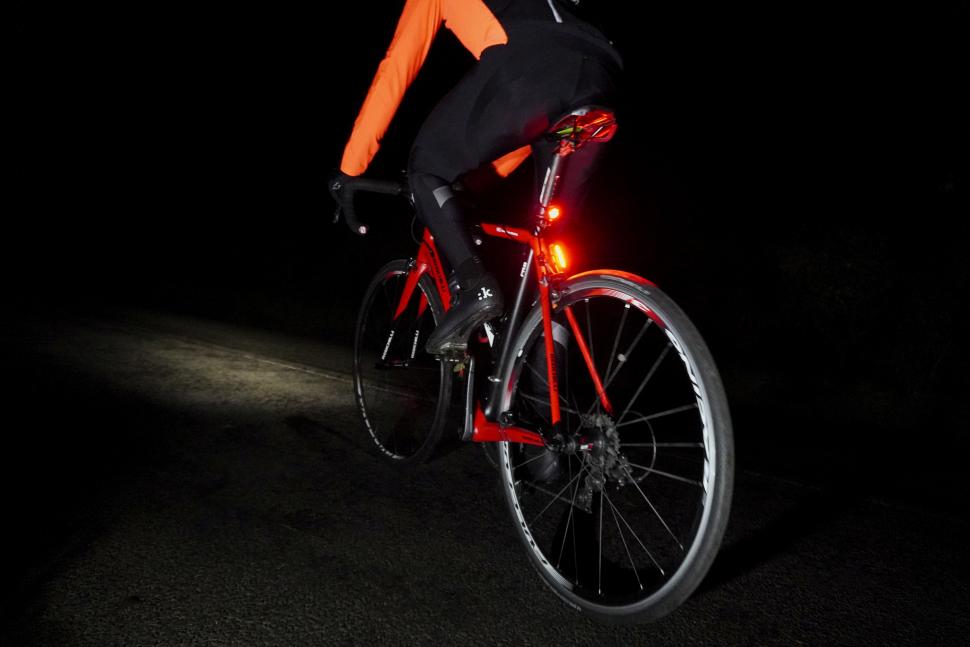
Isn’t it dangerous to cycle in the dark?
We once spoke to a road safety psychologist who pointed out that, in the height of summer, if you are wearing a bright yellow jersey and you’re riding past a field of rapeseed, you’re effectively invisible. The other side of that coin is, if you’re wearing the same bright yellow jersey in the dreary road conditions of winter, you’ll stick out like a sore thumb.
Get more tips on what kit to use and how to beat winter here
The same is even more true at night. By fitting a set of good lights, and especially lights that have some flashing function, you can bring a huge amount of attention to yourself so that you really stand out in dark surroundings. As long as you’re sensible enough to invest in the right equipment, riding at night is a perfectly safe activity.
I hate cycling in the rain – how can I make it better?
The rain really doesn’t have to put anyone off going for a spin. In fact, there’s a certain smug joy to be had in returning from a good ride in the wet, knowing that even the combined forces of Mother Nature weren’t enough to stop you from doing what you enjoy.
However, unless you’re a complete masochist, there are ways to make rainy riding more fun. Whatever the weather, take a lightweight packable rain jacket with you, just in case. And fit a set of mudguards: they might not be particularly cool, but they stop road spray affecting your vision at the front, and a streak of mud developing up the rear of your jacket.
Remember the age-old cycling cliché: there’s no such thing as bad weather, only the wrong kit. Collect a modest wardrobe of year-round cycling clothing, pick the right stuff for the right weather, and get out there.
Do I really need overshoes?
Cycling overshoes tend to be one of those bits of kit that mark out dedicated road or sports cyclists from everyone else. But if you’ve spent any time on a bike with cold and wet feet, you will know that it doesn’t matter whether you shave your legs or have a BMI in single figures, you need insulating and preferably waterproof overshoes. Foot freeze is just about the worst feeling you can have on a bike – especially if you’re a long way from home and there’s no potential respite.
We recognise that overshoes can be a bit of a faff, though, so it’s worth knowing that they’re not the only option in town. Waterproof winter cycling boots are an all-in-one way to keep your tootsies toasty, but they’re a significantly pricier option than whipping on a pair of overshoes.
What lights do I need to be legal?
This might get a bit heavy, but we’ll try to keep it brief and simple. When you ride a bike between sunset and sunrise, UK law requires that you have lights and reflectors.
Take a look at the best 2021/22 front lights for cycling, including our big beam comparison engine
At the front, you need at least one white light, fixed to the bike no more than 1500mm from the ground, pointing forwards, positioned centrally or to the right, marked as conforming to BS6102/3 or an equivalent EC standard if a steady light, or emitting 4 candelas of power if flashing. Yeah, that’s a lot to take in.
Check out road.cc's front light reviews
At the back, you need a red light, pointing backwards, positioned centrally or to the right, fixed between 350mm and 1500mm from the ground, marked as conforming to BS3648 or BS6102/3 or an equivalent EC standard if a steady light, or capable of emitting at least 4 candelas if a flashing light.
Find the best rear lights here
To be totally road legal, you also need: one rear reflector, coloured red, marked BS6102/2 (or equivalent), positioned centrally or on the right and fixed between 250mm and 900mm from the ground; and four pedal reflectors, coloured amber, marked BS6102/2 (or equivalent), and positioned so that one is visible to the front and another to the rear.
For more info, Cycling UK has a comprehensive guide to UK bike lighting regulations here.
I’ve got a good jacket but my body is still cold – what can I do?
It’s nice to have faithful favourite bits of kit, and really great cycling jackets are indeed really great, but the secret to comfortable cycling whatever the weather is layering. In summer, it’s important because you can add and remove layers to prevent overheating; in winter it’s important because different layers can have slightly different functions, and also serve to trap heat between them.
 In the case of a cold torso, there are a couple of things to consider. The first is: how good is the windproofing in the central front section of your jacket? Your torso bears the brunt of the air you hit as you cycle, so any chill is going to hit your chest and abdomen first.
In the case of a cold torso, there are a couple of things to consider. The first is: how good is the windproofing in the central front section of your jacket? Your torso bears the brunt of the air you hit as you cycle, so any chill is going to hit your chest and abdomen first. 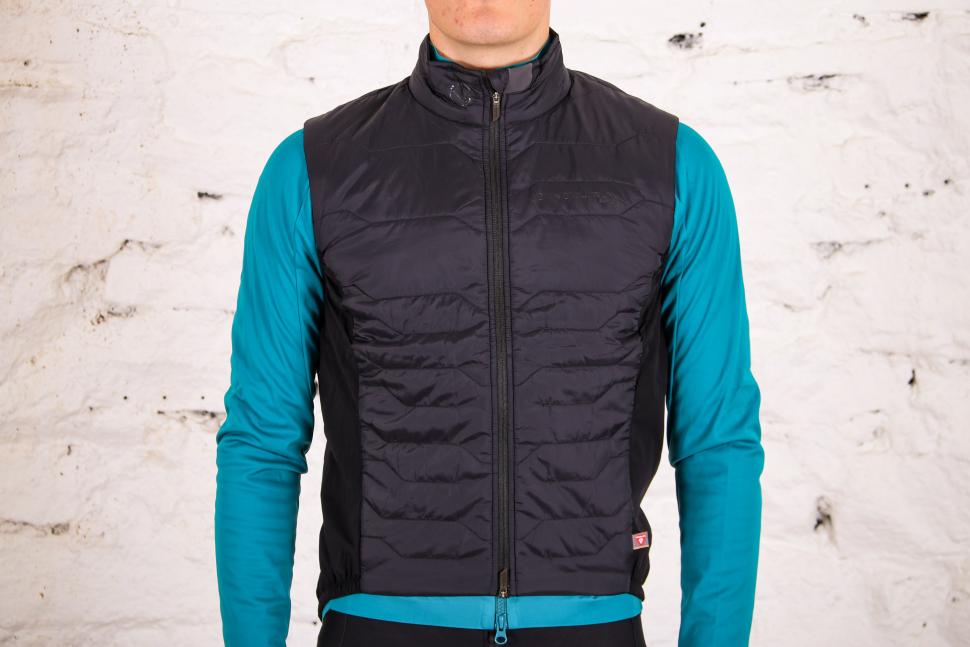
If your jacket doesn’t have dedicated windproofing, or it’s not quite effective enough for you, consider adding another specific layer in the form of a gilet. This is an armless ‘bodywarmer’ type garment that will give your torso some welcome extra insulation.
I’ve seen some riders wearing their cycling glasses in winter. Are they really that desperate to pose?
Well, we can’t rule the pose factor out entirely but eye protection in winter is just as important as during summer. In fact, unlike the unseen and cumulative effect of exposure to the sun’s UV rays, the threats to vision from winter riding are all too obvious.
The combination of wet roads and especially grit or rock salt in deep winter means that foreign bodies can be flung up from the road and into your eyes. Also, bear in mind that if you use the right lens – such as something with a subtle yellow tint – cycling glasses can even help to enhance contrast and provide better vision in low light.
I don’t want to wear bright yellow or orange – isn’t there anything else?
Absolutely – there is a growing selection of relatively demure, non-hi-viz cycle clothing that features reflective elements that are subtle during the daytime but really shine when caught in cars’ headlights or even streetlights. These are great for properly dark, night-time cycling.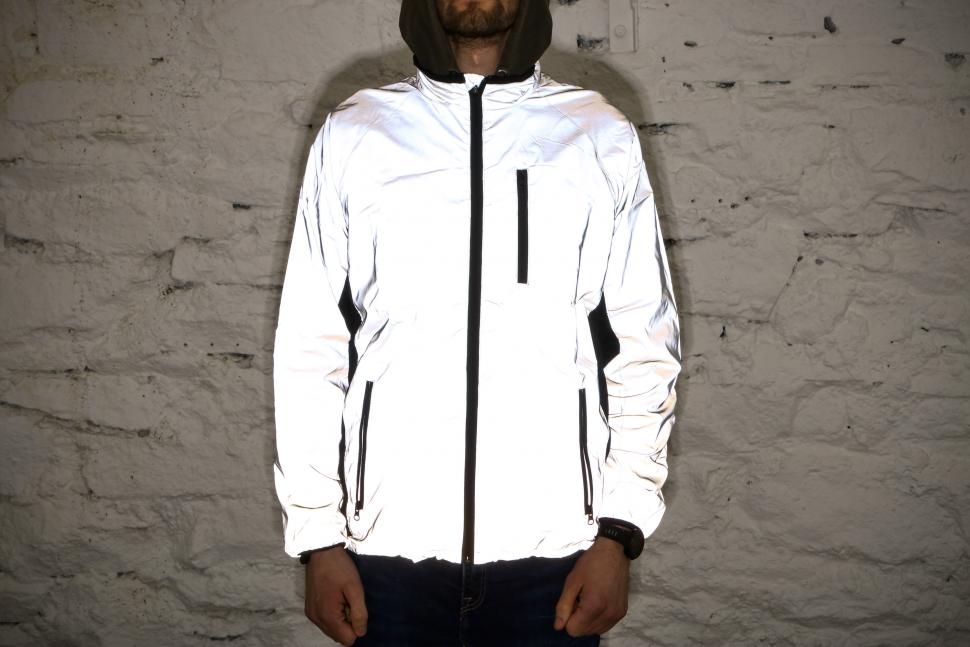
However, remember that a lot of winter cycling is done in gloomy conditions rather than full darkness. So, while hi-viz yellow or orange might suffer from a bad rep in the style stakes, having the main part of your body clad in a clear, bright colour – anything that won’t blend in with the surrounding greys and browns – is a very sensible move.
Is it worth swapping to special winter tyres or even going tubeless?
In a word, yes. Certainly, when winter road conditions become a fact of life, at the very least it’s worth giving your existing tyres a good once over to check what state they’re in. Then, consider running them at a lower pressure than in the summertime to give you a bit more grip if road conditions turn dodgy and also a very slightly reduced chance of puncturing.
 Swapping to dedicated winter tyres or tubeless tyres run at lower pressures can provide more grip and, more importantly, increased protection from punctures. Rain and snow slush bring flints, stones, thorns and all sorts of other rubber-shredding detritus onto the road. Tougher tyres and judicious roadcraft – don’t cycle in the gutter where all this crap collects – can help to stop you from spending rain-sodden minutes at the side of the road fixing a flat.
Swapping to dedicated winter tyres or tubeless tyres run at lower pressures can provide more grip and, more importantly, increased protection from punctures. Rain and snow slush bring flints, stones, thorns and all sorts of other rubber-shredding detritus onto the road. Tougher tyres and judicious roadcraft – don’t cycle in the gutter where all this crap collects – can help to stop you from spending rain-sodden minutes at the side of the road fixing a flat.
Can I ride in the snow?
There are two parts to the answer here: yes; but be sensible. Cycling in the snow can be fun and it can improve both your handling skills and confidence on a bike, but pay careful attention to the type of snow that’s out there and the state of the roads.
If the snow has been compacted by traffic, the gritters haven’t had much effect, and/or the temperature is below freezing, the potential for ice and particularly black ice is high. This poses a danger for cyclists – not just because you could fall off but because other road users can easily be caught out by it as well.
Far better is the other end of a period of snow, where temperatures are above freezing, the roads have been treated, and the white stuff is starting to melt. Riding in this on a bright sunny winter’s day is fantastic fun, albeit a pretty damp experience. Don’t forget your mudguards and run your tyres at the minimum suggested pressure (see above)!
Even when my main body is warm, the cold always seems to sneak in somewhere? What can I do?
When astronauts go for a spacewalk, they do a pressure test to check their suits aren’t leaking air. Winter cyclists need to adopt a similar kind of mentality and focus on the potential weak points: even if your torso and legs are nice and warm, the cold can sneak in at collar or cuffs, or even under your helmet. There are simple answers, though.
A snood or neck warmer will help seal the area around your neck. Putting the cuffs of your full-length gloves over the cuffs of your jacket will stop the breeze from creeping in, and a head covering such as a skullcap worn underneath your helmet will keep your head warm. Don’t forget to fit this over your ears to keep them toasty as well. Rather like toes, ears can suffer in the cold. Remember to address your extremities and weak points and you’ll be ok.
What’s lurking in the shadows?
Wouldn’t you like to know? Actually, this is an interesting question and one of the great joys of winter cycling. Once darkness has closed in, all sorts of wildlife is roaming about the place so you may well get to see and hear things in nature that you simply wouldn’t encounter at any other time of year. 
There are no bears or wolves to worry about here in the UK so unless it’s a badger with anger issues or a fox that’s been at the old fermented festive bin juice, there’s very little to worry about. So enjoy your very own winter wonderland this year and get out on your bike!
Latest Comments
- imajez 25 min 16 sec ago
- looks like someone has fallen for the steel is real markerting BS. I only care how a bike rides, not what it is made of. I had a lovely steel...
- lonpfrb 1 hour 45 min ago
That argument is ignorance of the widespread height and width restrictions to be found on the many minor roads that were originally created for...
- David9694 4 hours 1 min ago
cyclists should be made to have number plates - Interesting police video here of the range of illegal number plates - we'd got, as the caption says...
- rookybiker 5 hours 14 min ago
The trailer seems to connect to both ends of the rear axle. Can it do tight corners without dragging the tyre sideways?
- froze 5 hours 17 min ago
Motorists have always been unkind to cyclists, but distracted driving is adding to the problem....
- Destroyer666 6 hours 10 min ago
Have you owned Bont shoes? In my experience even the widest Lake shoes have had a bizarre form of narrowing way too much in the toe area. But the...
- froze 6 hours 38 min ago
Not sure if this is possible, but this news letter goes out all over the world, and some places like Decathlon does not send stuff to America, in...
- Hirsute 7 hours 23 min ago
I'm confused as to why you'd need bib shorts indoors.
- Oldfatgit 7 hours 51 min ago
I'm sure you were being sarcastic... however ... Lewis Hamilton lives in Monaco. Yet another car driver that doesn't pay any tax
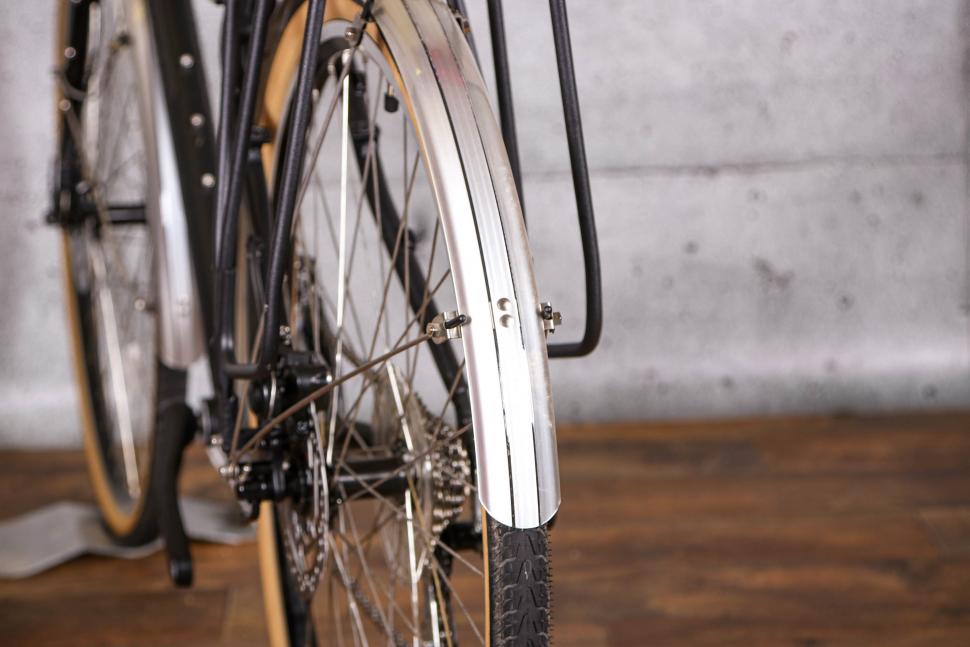


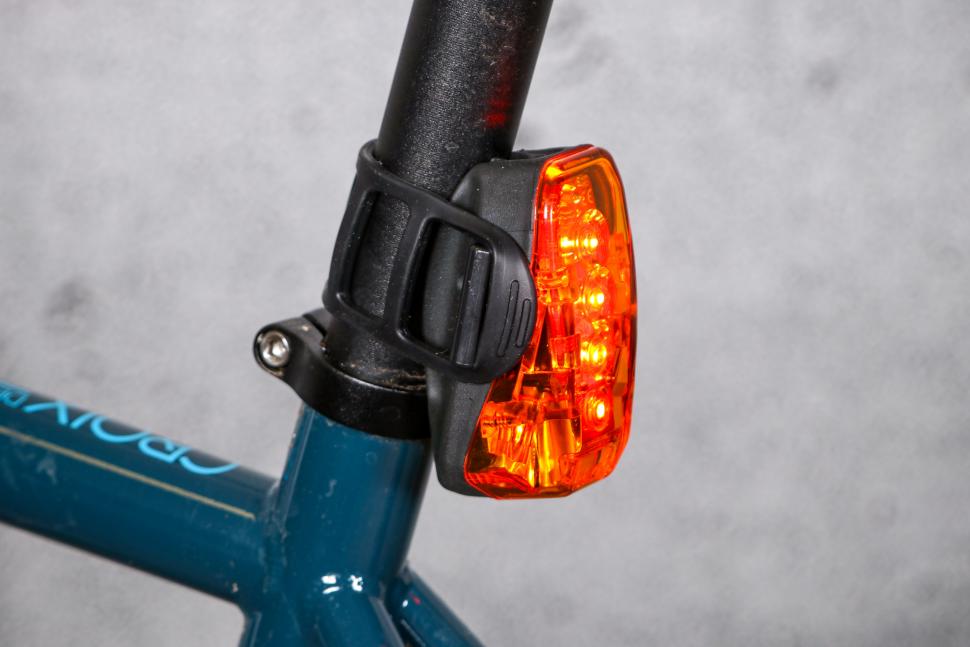
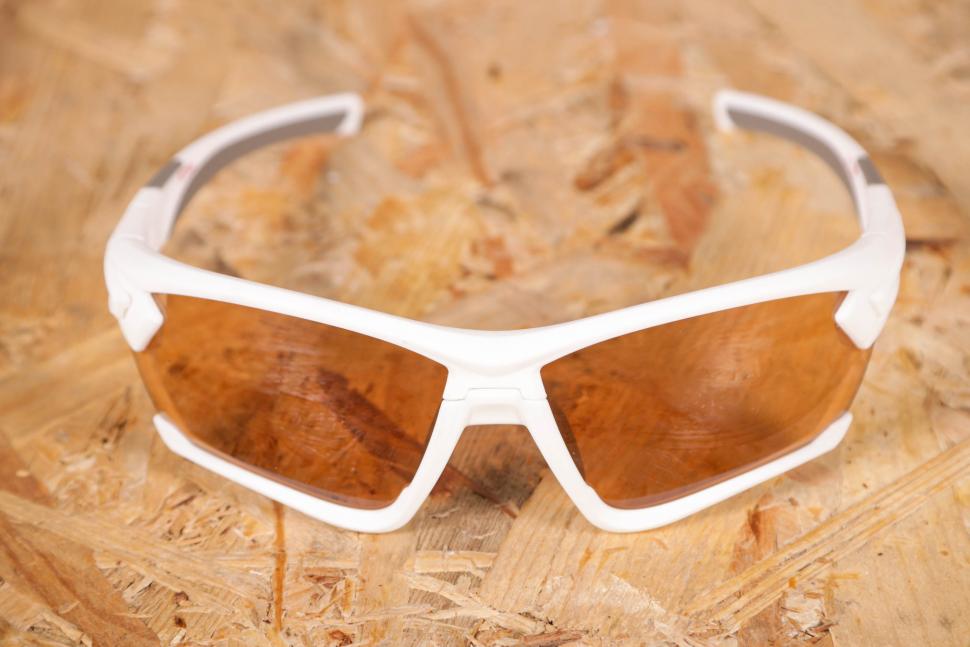
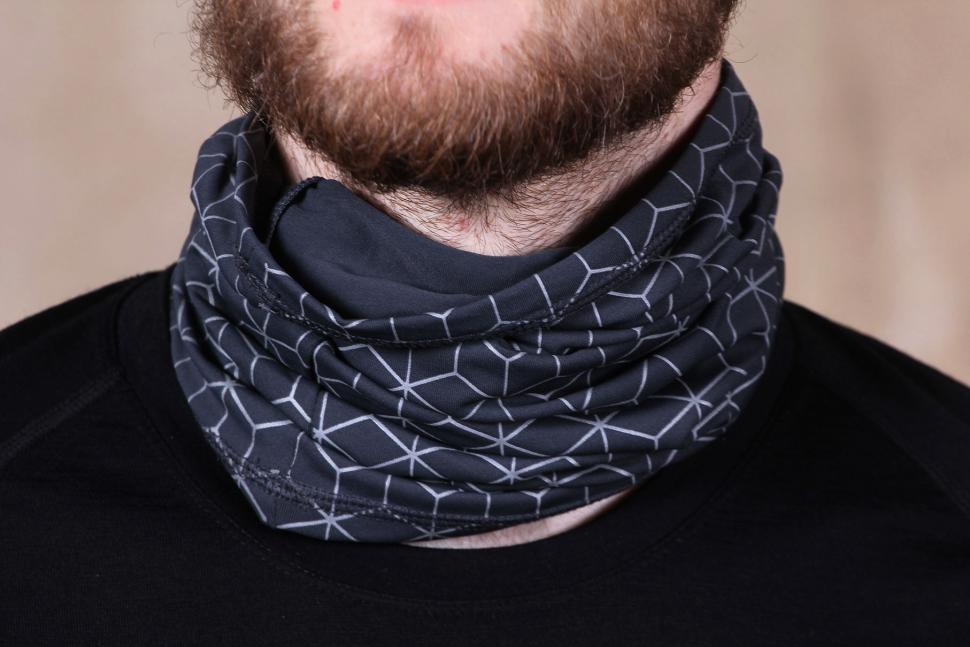
Add new comment
4 comments
What I find interesting about riding in the dark, is that I noticed cars won't pass me until there is no oncoming traffic, then they move all the way over one lane to pass, during the day they'll pass me with just a foot of space with the law says 3 feet. I think it's actually safer to ride at night!
I use a main headlight, plus a smaller headlight on strobe mode all on the handlebar; on the rear I use the main tail light on a pulse mode on the seat bag, another smaller but bright tail light on the seat tube on strobe, and another one on my helmet that alternates flashing from the side to the rear. Plus my clothes have reflective stuff as well as pants straps that reflect. So maybe all those lights and reflective stuff makes people get all the way over? Or are the motorists just like that at night?
"unless it’s a badger with anger issues"
Having seen a badger on a night ride, I can tell you they can bloody well move quickly!
Fast. Silent. Deadly
Enough about your bowels - what about the badger?